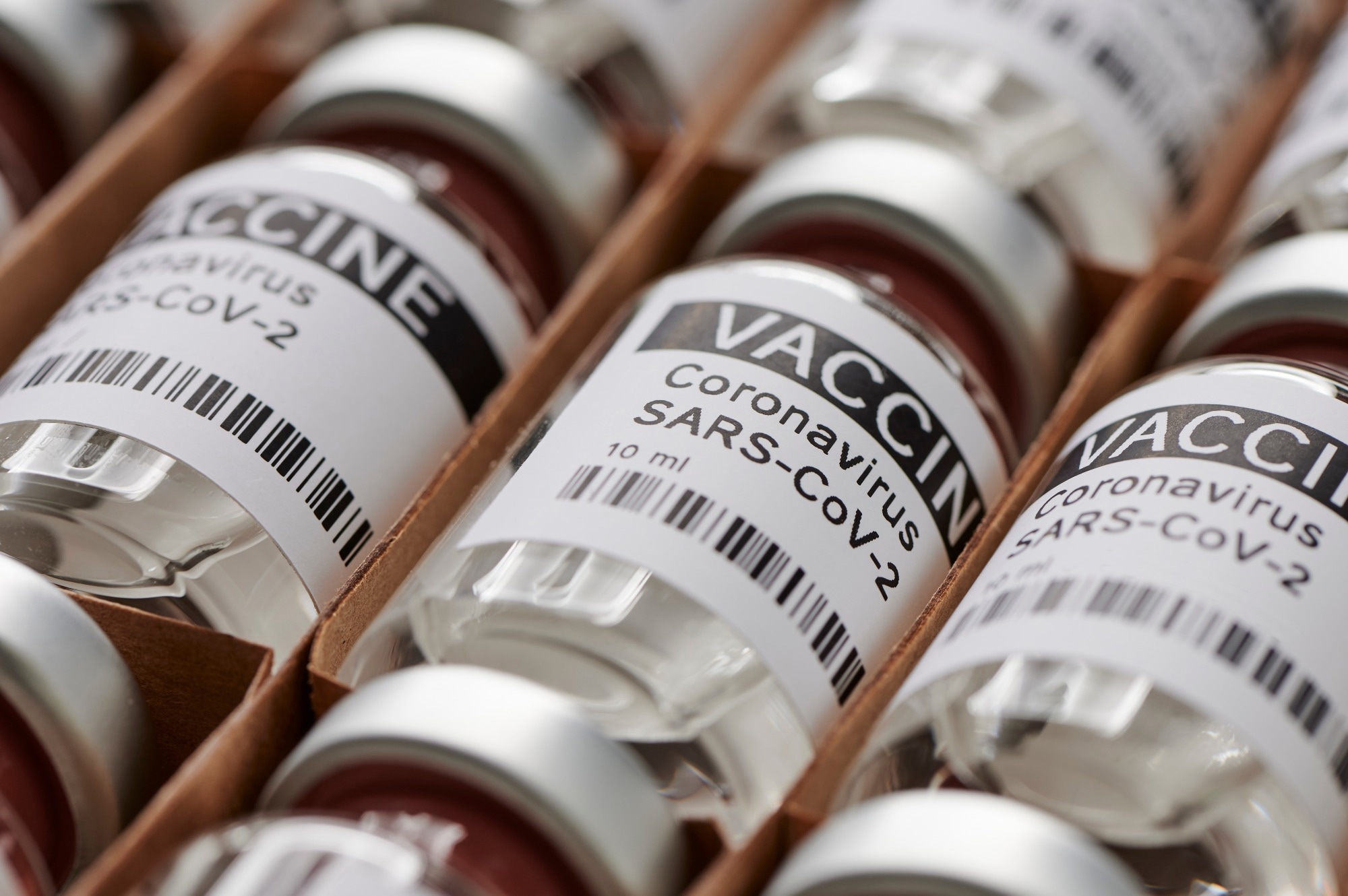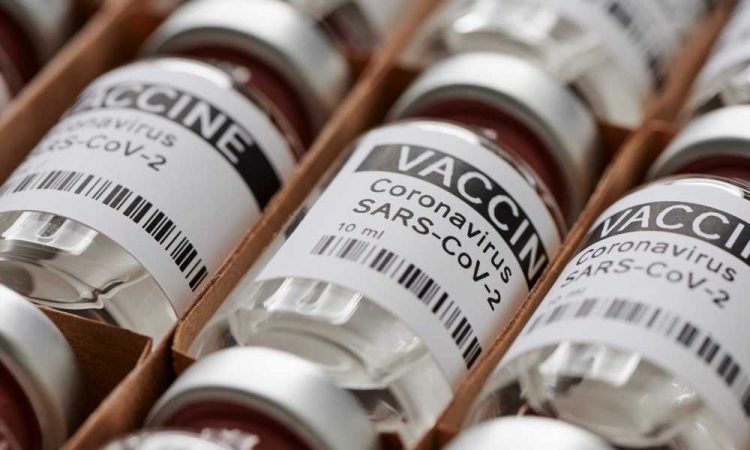In a recent study published in the Open Forum Infectious Diseases Journal, researchers evaluated the effectiveness, in absolute and relative terms, of the severe acute respiratory syndrome coronavirus 2 (SARS-CoV-2) Omicron BA.1 sub-variant of concern (sub-VOC)- and Omicron BA.4/5 sub-VOC-containing bivalent coronavirus disease 2019 (COVID-19) messenger ribonucleic acid (mRNA) vaccines against COVID-19 during BA.5 predominance in Japan.
 Study: Effectiveness of BA.1- and BA.4/BA.5-containing bivalent COVID-19 mRNA vaccines against symptomatic SARS-CoV-2 infection during the BA.5-dominant period in Japan. Image Credit: M-Foto/Shutterstock.com
Study: Effectiveness of BA.1- and BA.4/BA.5-containing bivalent COVID-19 mRNA vaccines against symptomatic SARS-CoV-2 infection during the BA.5-dominant period in Japan. Image Credit: M-Foto/Shutterstock.com
Background
The continual emergence of increasingly transmissible, virulent, and immune-evasive SARS-CoV-2 VOCs has threatened the efficacy of COVID-19 vaccines and other therapeutics, such as monoclonal antibodies and antiviral drugs.
In response to the evolutionary challenges posed by SARS-CoV-2 and waning immunity levels, researchers developed updated bivalent vaccines coding for Omicron BA.1 and Omicron BA.4/5 to mitigate COVID-19.
The Omicron BA.1- and Omicron BA.4/5-comprising bivalent vaccines received approval for use in Japan on 20 September and 13 October 2022, respectively, based on the results of in vitro studies using animal models.
Further research is required to evaluate the vaccine effectiveness (VE) of bivalent COVID-19 vaccines in the real world.
About the study
In the present multi-center, test-negative, prospective case-control-type study, researchers evaluated Omicron BA.1- and Omicron BA.4/5-comprising vaccine VE against symptomatic COVID-19 during the Omicron BA.5 wave.
The Factors Associated with SARS-CoV-2 Infection and The Effectiveness of SARS-CoV-2 vaccines (FASCINATE) study included individuals aged 16.0 years and above who visited either of the 10 health facilities located in outpatient settings in Kanto, Japan, due to SARS-CoV-2-like symptoms during the period of BA-5 predominance, between 20 September and 31 December 2022.
The team excluded individuals who needed immediate lifesaving treatments, individuals who had prior participation in the study, individuals with an unknown time of symptom onset, individuals who underwent SARS-CoV-2 testing after ≥15.0 days of symptom onset, recipients of non-mRNA COVID-19 vaccines, and recipients of unknown types of COVID-19 vaccines.
The participants filled out questionnaires to provide vaccination data. Using polymerase chain reaction (PCR), SARS-CoV-2-positive individuals (cases) and SARS-CoV-2-negative individuals (controls) were identified.
Bivalent vaccine estimates (VE) were calculated in comparison to no vaccination [absolute vaccine effectiveness (aVE)] and monovalent vaccines [relative vaccine effectiveness (rVE)], which were administered more than 0.5 years before in Japan.
Logistic regression modeling was performed to calculate the adjusted odds ratios (aORs). Data were adjusted for covariates such as age, sex, comorbidities, occupation, SARS-CoV-2 test reports in the previous month, self-documented prior COVID-19 history, the medical facility visited, calendar weeks, masking, and the status of influenza vaccination.
Results
In total, 6,955 individuals were recruited across 10 health facilities, of which the team excluded 170 individuals due to an unknown date of symptom onset, 33 individuals for undergoing testing ≥15.0 days after the onset of symptoms, and 561 non-mRNA or unknown vaccine recipients.
As a result, 6,191 individuals, with a median age of 36.0 years, were included in the final analysis, among whom 57% (n=3,498) individuals were SARS-CoV-2-positive.
The absolute VE of the bivalent vaccine (irrespective of sub-VOC coded for) was 72.0%. Stratifying by sub-VOCs, the absolute VE estimates of Omicron BA.1- and Omicron BA.4/5-comprising bivalent COVID-19 vaccine were 65.0% and 76.0%, respectively.
The rVE estimates comparing the bivalent vaccine (irrespective of the sub-VOC encoded) vs. monovalent COVID-19 vaccines post-three to six months and post-six months were 35.0% and 46.0%, respectively.
An aOR value of 0.990 was obtained for SARS-CoV-2 infections, comparing the bivalent vaccine ≥two weeks versus two weeks to three months after the third or fourth dose of monovalent COVID-19 vaccines.
The median values for the duration between bivalent vaccine administration and COVID-19 testing and between monovalent vaccine administration and testing were 34.0 days and 66.0 days, respectively. An aOR value of 0.950 was obtained for COVID-19 by the status of influenza vaccination.
Conclusions
Overall, the study findings showed high absolute VE for the Omicron BA.1- and Omicron BA.4/5-comprising bivalent COVID-19 mRNA vaccine against COVID-19 during BA.5 predominance (65.0% and 76.0%), and moderate relative VE in comparison to monovalent COVID-19 vaccines (46%), with greater immune benefits for longer periods since the most recent monovalent COVID-19 vaccination.
The comparison made soon after the administration of monovalent-type and bivalent-type COVID-19 vaccines indicated that the bivalent COVID-19 vaccine was not superior to the monovalent vaccines during Omicron BA.5 predominance.
The absolute VE estimate for the bivalent COVID-19 vaccine was lower compared to the estimates for monovalent primary vaccinations against the SARS-CoV-2 Wuhan-Hu-1 strain, the Alpha VOC, and the Delta VOC, ranging from 85% to 95%.
The findings indicate immunological imprinting targeting the SARS-CoV-2 Wuhan-Hu-1 strain, which is consistent with previous studies but underpins the continual rollout of the updated bivalent COVID-19 vaccines.
Only short-term VE was estimated, warranting further research to evaluate the mid-term and long-term aVE and rVE of bivalent vaccines.
-
Takeshi Arashiro et al., (2023)., Effectiveness of BA.1- and BA.4/BA.5-containing bivalent COVID-19 mRNA vaccines against symptomatic SARS-CoV-2 infection during the BA.5-dominant period in Japan, Open Forum Infectious Diseases, doi: 10.1093/ofid/ofad240. https://academic.oup.com/ofid/advance-article/doi/10.1093/ofid/ofad240/7148518
Posted in: Medical Science News | Medical Research News | Disease/Infection News
Tags: Antibodies, Coronavirus, Coronavirus Disease COVID-19, covid-19, Drugs, Efficacy, immunity, in vitro, Infectious Diseases, Influenza, Omicron, Polymerase, Polymerase Chain Reaction, Research, Respiratory, Ribonucleic Acid, SARS, SARS-CoV-2, Severe Acute Respiratory, Severe Acute Respiratory Syndrome, Syndrome, Therapeutics, Vaccine

Written by
Pooja Toshniwal Paharia
Dr. based clinical-radiological diagnosis and management of oral lesions and conditions and associated maxillofacial disorders.
Source: Read Full Article
